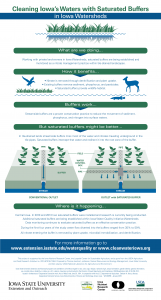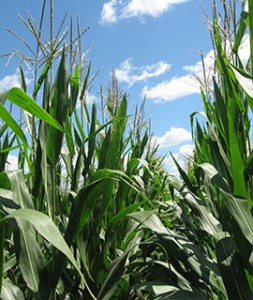AMES, Iowa – Using science-based research, Iowa State University Extension and Outreach specialists are working to improve the quality of water throughout the state of Iowa. The use of saturated buffers in watersheds has proven to be a successful nitrate management practice.
ISU Extension and Outreach has been forging partnerships with private land-owners in Iowa watersheds to establish saturated buffers. These buffers reduce the movement of sediment, phosphorus and nitrogen into surface water while redirecting water into the root zone of the buffer.
Click on the infographic below to enlarge…


